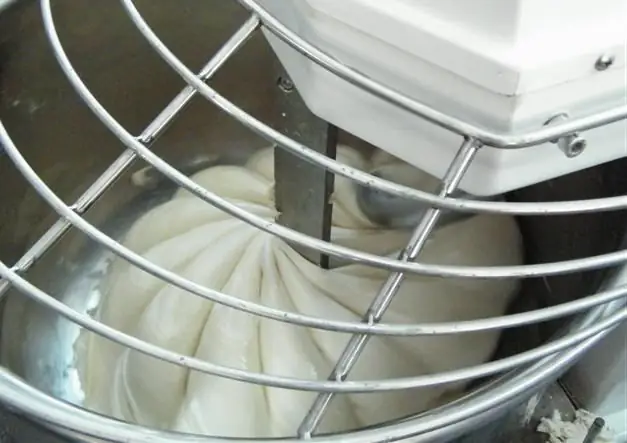2025 Author: Priscilla Miln | [email protected]. Last modified: 2025-01-22 17:55:19
If you have always dreamed of having a real wild animal in miniature at home, then an African serval will be an excellent choice. Moreover, it is very prestigious to become the owner of such an animal, because these cats are on a par with thoroughbred horses. However, with regard to the content, the serval does not require any special conditions: this animal is very unpretentious and has a noble character, which makes it an excellent pet. We invite you to get to know this amazing animal better today.

African serval cat: description
This animal looks like a long-legged, slender, strong cat of medium size. The closest relatives of the serval are the lynx and the caracal. Characteristic features of the appearance of this cat are very long strong paws and disproportionately large ears with rounded tips. The African serval has a small head.with an elongated muzzle and a wide nose and a short tail that does not reach the ground. The eyes of the representatives of the breed are quite large, and the pupils of adult animals are round. The claws of the serval are sickle-shaped and, like those of domestic cats, retract into the pads of the paws.
As for the dimensions, the African serval is larger than the usual "Murki" and "Vaska". So, the height at the withers of these wild seals is from 40 to 65 centimeters. The body length reaches 90-130 centimeters, and the tail - 30-45 centimeters. Serval weight can vary between 8-18 kilograms.
These African cats are characterized by dark spots and stripes on a yellow-gray background. The chest, muzzle and belly are white. Moreover, the color of these animals varies depending on the habitat. So, in mountainous areas you can meet completely black representatives of the breed, and in captivity, white servals with silver-gray spots were born several times.
When communicating, these animals use various types of vocalizations, including growls, purrs, high-pitched screams and others.

Habitat and habitat
The serval cat comes from Africa. On this mainland, it is found almost everywhere, with the exception of the Sahara desert, the southern regions and the equatorial forest zone. In nature, these animals prefer to settle in open spaces with thickets of grass and shrubs not far from fresh water sources. But the deserts, tropical rainforests and dry plains of the African serv altries to avoid.
Lifestyle
For the most part, these felines are active at dusk. So, they go hunting in the late evening and early morning. However, sometimes you can meet a serval stalking prey in the daytime. Thanks to their long paws, these wild seals easily and silently move through the tall grass. Excellent hearing helps them easily track down even small prey. In addition, the serval is able to jump to a height of up to three meters, which allows it to shoot down birds taking off from the ground. These animals prefer not to chase the prey, but to sneak up on it in the tall grass, and then, having made one big jump, grab it with their claws and crush it under them. The serval also easily digs out various rodents from holes. These cats are excellent tree climbers and swimmers. In general, it is safe to call the serval an excellent hunter. So, according to statistics, two-thirds of his attacks end in the capture of prey.
As for the natural enemies of the serval, they are wild dogs, leopards and hyenas. In addition, these magnificent animals often become victims of humans. In moments of danger, the African serval prefers to either hide or flee.

Social structure
African servals are solitary, pairing up exclusively during the breeding season. Males of these animals are very territorial. So, the area of their individual plots can be from 40 to 70 square meters. kilometers. At the same time, females secure much smaller territories for themselves - 2-9 square meters. kilometers.
African serval breeding
During the mating season, the female and male pair up. Together they hunt and rest. Interestingly, males of this species can mate with both caracals and ordinary domestic cats, resulting in hybrids. In anticipation of childbirth, the female serval settles in an old aardvark burrow or builds a nest in thick tall grass. Pregnancy in representatives of this species lasts from 65 to 75 days. In one litter, two or three cubs are born. When small males begin to hunt on their own, the mother drives them out of her territory. Females stay with their parent much longer. Puberty in servals occurs at the age of one and a half to two years.

Serval at home
These amazing cats today can be increasingly found as pets. There is a myth about the danger of a serval for a person, but such an opinion is not based on any real facts. Indeed, in nature, the victims of these representatives of the cat family are small animals and birds. Man, on the other hand, is more likely to act as a natural enemy than a potential prey. In this regard, the serval cat will under no circumstances attack its owner and members of his family. Therefore, such an exotic beast can be kept even in a house where there are children. It is quite possible to have a representative of this breed, even if you already have a cat, a domesticThe serval is likely to quickly find a common language with her, especially if you have adopted him at an early age (it is recommended to take 1.5-2 month old kittens). Interestingly, these natives of Africa often resemble dogs in their habits, so it is quite possible to walk with them on a leash. In addition, the serval will be happy to bring you a ball or other thrown toy. They are also very gentle creatures who love affection and attention, as, indeed, all domestic cats.

As for feeding, in the wild, the serval feeds mainly on rodents and small birds. When kept at home, their diet should consist of raw meat with bones - beef and chicken. On the day, these cats can eat from 400 grams to 1.5 kilograms of food. In addition, servals need to be given vitamins with calcium supplements.
These Africans are in very good he alth. However, in urban conditions, they need to be vaccinated, like all other animals. As for life expectancy, the average is between 15 and 20 years.
Recommended:
How to choose a mixer for home? Dough mixer for home: price, reviews

The secret of successful baking is well-kneaded dough. Hand kneading the dough at home is a laborious task. Easily and quickly make any kind of dough household dough mixer for the home. Such devices in a jiffy create dough of various types. They produce yeast, steep, liquid, shortbread, sugar, gingerbread and biscuit dough of excellent quality. In addition, the devices are able to prepare excellent confectionery mixes, sauces and creams
What to do at home when there are no parents at home? The kids know the answer

All people, and not only adults, have the right to living space and moments of solitude. But how do children, big and small, use this space and time? You don't have to be very observant to notice how much they like to be alone in the house. Still - for a while you can do whatever you want! Actually, what to do at home when there are no parents at home?
Home magic: how to change eye color at home

Not much information can be found on how to change eye color at home. Read on and find out how it's done
How to spend children's birthdays at home? Children's birthday party at home

What could be more pleasant and calmer for parents than celebrating children's birthdays at home? Of course, it is much cheaper, and mothers will not worry about their children, although the hassle and cleaning will increase. If you organize everything correctly, think over the children's menu and competitions in advance, then everything will be held at the highest level, and the child will remember the holiday for many years
African hedgehog: reviews, photos and content. How long do African hedgehogs live?

Pets have always been close friends for humans. Someone likes cats or dogs, hamsters or birds. But there are people who prefer to keep exotic animals at home, which include the African pygmy hedgehog. This hybrid breed was created specifically so that the animal could be kept at home

